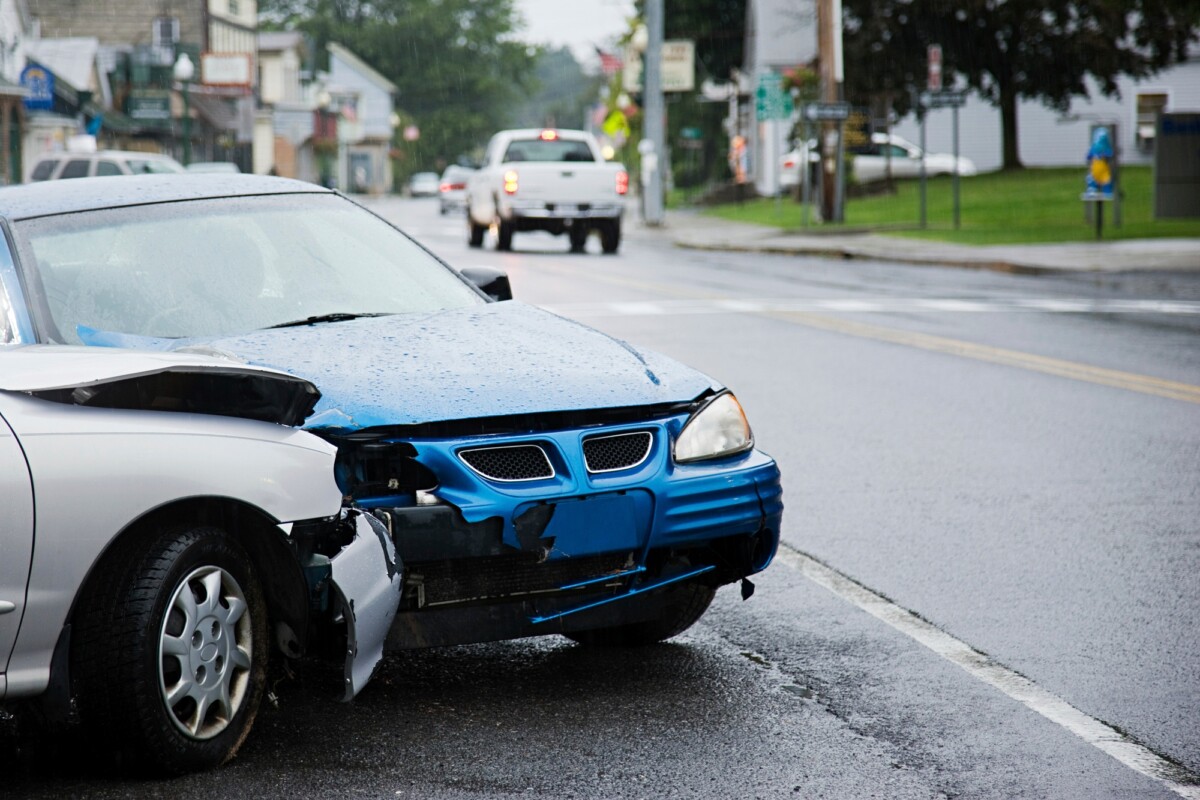Who Pays for Personal Injury in a Car Accident? Learn How Claims Work

Understanding who pays for personal injury in a car accident is essential for drivers and those involved in accidents. This knowledge helps navigate the claims process effectively to secure deserved compensation.
Understanding Personal Injury Claims
Who is Responsible for Personal Injury Costs?
Determining who pays for personal injury can depend on several factors:
- At-Fault Driver: Their insurance usually covers your medical expenses.
- Your Insurance: Your own insurance may cover injuries, especially with personal injury protection (PIP).
- Health Insurance: It may cover some medical costs, but you might still need to claim against the at-fault driver.
The Claims Process
To simplify the claims process, follow these steps:
- Report the Accident: Notify the police and your insurance.
- Gather Evidence: Collect photos, witness statements, and medical records.
- File a Claim: Submit to the at-fault driver’s insurance or your own.
- Negotiate: Be ready to negotiate for a fair settlement.
- Consider Legal Action: Consult an attorney if negotiations fail.
Important Statistics
- Over 38,000 fatalities occurred in U.S. car accidents in 2020 (NHTSA).
- About 1 in 8 drivers are uninsured (Insurance Information Institute).
- Injured parties with attorneys receive 3.5 times more in settlements (Insurance Research Council).
These insights can help you take the right steps after an accident.
Types of Personal Injury Claims
Understanding who pays for personal injury in car accidents is vital for victims seeking compensation for medical expenses, lost wages, and pain and suffering. Here are the main types of personal injury claims:
1. Bodily Injury Claims
- These arise from physical injuries due to another driver’s negligence, such as fractures and whiplash.
- In 2020, over 2.7 million people were injured in car accidents.
Bodily injury claims are typically covered by the at-fault driver’s insurance, making documentation crucial.
2. Property Damage Claims
- These claims address damage to vehicles and property, with average costs around $20,000 in 2020.
They are usually resolved through insurance, but disputes over damage value can occur.
3. Pain and Suffering Claims
- These account for emotional and physical distress and can significantly increase compensation amounts.
They often rely on personal testimony and medical records.
4. Wrongful Death Claims
- Filed by family members when an accident results in death, seeking compensation for lost income and funeral costs.
Car accidents are a leading cause of death for individuals aged 1-54, making these claims complex and often requiring legal help.
Who is Responsible for Paying?
Understanding who pays for personal injury in a car accident is essential for victims, as it impacts their financial and emotional recovery. Knowing the responsible parties helps ensure they receive the compensation they deserve.
Determining responsibility for personal injury costs in car accidents involves various factors, including insurance policies and state laws. Here’s a breakdown of key players:
Insurance Companies
- Typically, the at-fault driver’s insurance covers the injured party’s medical expenses and damages. If the at-fault driver is uninsured, victims may rely on their own insurance.
The At-Fault Driver
- If found liable, the at-fault driver may be personally responsible for damages, especially if their insurance is insufficient. In ‘fault’ states, their liability insurance covers the injured party’s expenses. Victim’s Own Insurance
- In no-fault states, victims can seek compensation from their own insurance, which can speed up claims but may limit lawsuits against the at-fault driver. Personal Injury Protection (PIP) often covers medical costs.
Important Statistics
- The NHTSA reported over 38,000 fatalities in U.S. car accidents in 2020, emphasizing the need for clarity on liability and insurance. Additionally, about 13% of drivers are uninsured, complicating compensation processes.
Insurance Coverage and Personal Injury
In car accidents, a key question is, who pays for personal injury in a car accident? Knowing the financial responsibilities can help victims manage the aftermath effectively. Insurance coverage is crucial in determining who pays for personal injuries, as most drivers are required to have auto insurance that covers medical expenses and lost wages.
Insurance Coverage Basics
Insurance types include:
- Liability Insurance: Covers damages to others if you are at fault.
- Personal Injury Protection (PIP): Pays for your medical expenses regardless of fault.
- Uninsured/Underinsured Motorist Coverage: Protects you if involved with an uninsured driver.
Understanding these coverages clarifies responsibility for injuries. For example, PIP can relieve stress by covering your medical bills.
How Claims Work
- Filing a Claim: Injured parties file claims with the at-fault driver’s insurer.
- Negotiation: Settlements often involve discussions about injuries and damages.
- Legal Action: If negotiations fail, victims may pursue legal action.
Statistics show that 90% of personal injury claims settle before trial, emphasizing the importance of understanding the claims process.
The Role of Fault in Car Accidents
Understanding who pays for personal injury in a car accident is crucial, as the financial implications can be significant. The party at fault typically covers the costs associated with injuries, but specifics vary by state laws and insurance policies.
Determining fault is key in personal injury claims. The responsible party usually bears the financial burden, influenced by factors like traffic laws, eyewitness accounts, and police reports.
How Fault is Determined
- Traffic Laws: Each state has unique laws that dictate fault assessment.
- Evidence Collection: Photos, witness statements, and police reports can impact fault determination.
- Insurance Adjusters: Insurers conduct investigations to establish fault, affecting who pays for personal injury.
In many states, comparative negligence applies, adjusting compensation based on shared fault. For instance, being 20% at fault may reduce your compensation by that percentage.
Types of Fault Systems
- At-Fault States: The responsible driver pays for damages.
- No-Fault States: Each driver’s insurance covers their own injuries, simplifying claims but limiting lawsuits.
Understanding fault is essential for navigating the claims process and potential compensation.
Statistical Overview of Car Accident Claims
Understanding who pays for personal injury in a car accident is essential due to the significant financial implications involved. This section provides a statistical overview of car accident claims, highlighting the factors that determine financial responsibility for personal injuries.
Overview of Car Accident Claims Statistics
Car accidents are prevalent, with the National Highway Traffic Safety Administration (NHTSA) reporting approximately 38,680 fatalities in 2020. This underscores the importance of grasping the claims process.
Key Statistics
- Injury Rates: Over 4.4 million people are injured in car accidents annually, according to the CDC.
- Claim Frequency: About 1 in 7 drivers files a claim each year, per the Insurance Information Institute.
- Average Payouts: The average personal injury claim payout is around $15,000, varying based on injury severity and circumstances.
Factors Influencing Who Pays for Personal Injury
Several factors influence who pays for personal injury, including insurance coverage and fault determination.
Insurance Coverage
- Liability Insurance: Required in most states, it covers damages if the insured driver is at fault.
- Personal Injury Protection (PIP): In no-fault states, PIP covers medical expenses regardless of fault.
Understanding these elements helps individuals navigate the complexities of car accident claims effectively.
Steps to Take After a Car Accident
After a car accident, knowing who pays for personal injury in a car accident is essential for your recovery and compensation. Here are the key steps to follow:
Assess Your Safety and Health
Check for Injuries
- Ensure safety for you and your passengers.
- Call for medical help if needed, even if you feel fine.
Move to Safety
- If possible, relocate your vehicle to avoid further accidents and turn on hazard lights.
Gather Information
Exchange Details with Other Parties
- Collect names, contact info, and insurance details from all drivers.
- Take photos of the scene and document conditions.
Witness Accounts
- Gather contact information from witnesses for their statements.
Notify Your Insurance Company
Report the Accident
- Contact your insurer promptly and provide all necessary information.
Understand Your Coverage
- Review your policy to clarify who pays for personal injury claims.
Consult with a Legal Professional
Seek Legal Advice
- If injuries are serious or liability is unclear, consult a personal injury attorney.
Know Your Rights
- An attorney can help you understand your rights and potential compensation.
Your story deserves to be heard—submit your case at LegalCaseReview.com or speak to us at 📞 (833) 279-1850.



